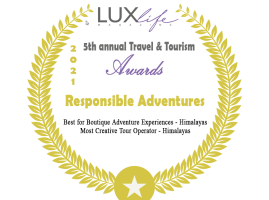Spectacular Monasteries in Ladakh where you can stay to unwind
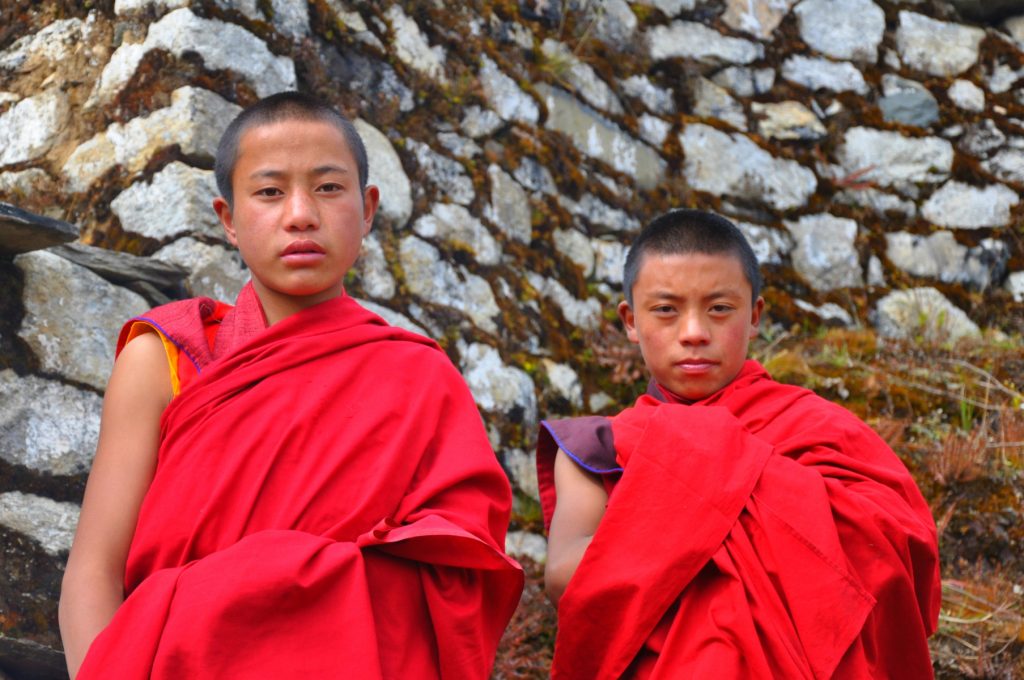
Spectacular Monasteries in Ladakh where you can stay to unwind Ladakh is fast gaining a reputation amongst travellers for its incredibly ornate monasteries. These monasteries are part of Ladakh’s rich culture through their architecture, paintings, and ancient texts. Some of the monasteries have begun to allow visitors to stay. Here we have some monasteries that enable visitors to remain on their premises. Thiksey Monastery Thiksey is one of the biggest and most famous monasteries in Ladakh. It is renowned for its magnificence in architecture, religious importance, along spectacular views. This monastery welcomes guests with gracious hospitality. The monastery provides rooms with essential amenities for an intimate experience of Ladakhi hospitality for a limited period. You can meditate in the peacefully serene ambience and watch the monks and nuns g about their daily routine. You can also go into the monastery’s well-stocked library and learn more about Buddhist spirituality science. Lamayuru-Monastery The Lamayuru Gompa is undoubtedly the most captivating of monasteries outside of Leh. The area close to this monastery is also called “moonscape” due to the terrain’s interesting appearance. Like most monasteries, it is set away from the town in its serene surroundings while allowing the chanting’s power can get you into a trance of peace and contemplation. This monastery is located on the Leh to Srinagar highway. You have several options to either go for a homestay, stay at the village guest house, or stay at the monastery. An excellent restaurant within the monastery specializes in delicious Tibetan food. Hemis-Monastery Hemis Monastery is the most significant and wealthiest monastery in all of India. It is situated a few kilometres from Leh town, in a barren environment. The monastery is well known for its annual Hemis festival with its vibrant rituals, colourful mask dances, and perfect ambience. The Hemis monastery accommodates tourists who want to stay for an extended period. The spectacular scenery and surroundings give one peace of mind. This monastery is visited by thousands of tourists each year, and the numbers keep increasing annually. The attendance of the morning prayers can get you in a zone. The Hemis monastery is one of the must-visit institutions in Ladakh. Phuktal Monastery The Phuktal monastery is built in complete isolation around a cave on the slopes of a rugged hill. It is one of the most breathtaking monasteries in the Zanskar region of Ladakh. It is a two-day drive from Leh, which makes it quite challenging to get there. The main monastery is inside a cave. The architecture reflects the beauty of the ancient Buddhist art form. Visitors are reluctant to leave because of the absolute serenity of the surrounding. Visitors can opt to stay at the accommodation available for short stays. The experience of staying at this monastery can be mind-boggling with the peaceful atmosphere and the breathtaking scenery. You can participate in the prayer ceremonies and witness the rituals. The resident monks are ever so willing to share their knowledge with you. Take advantage of the monks’ remote location and genuine hospitality to make the most of your cultural and spiritual experience. Rangdum Monastery The Rangdum monastery is another of Ladakh’s delightful monasteries, snuggled in an isolated part of Zanskar Valley. The Gompa is constructed on a hill overlooking a small village below. Trekkers on the Zanskar trek often stay near its vicinity. Some trekkers opt to camp within the premises of the monastery, which is peaceful. It is a relatively small monastery with about 40 resident monks and a few cattle. Life at the monastery continues as it has done for the past few centuries at its own pace. The monks are friendly and willing to converse with visitors during their free time. They share their knowledge of their religion willingly during your stay with them. You can volunteer to help with the chores, explore the surroundings, mingle with the villagers, and visit the village’s amiable residents.
Shamanism in Nepal Himalayas
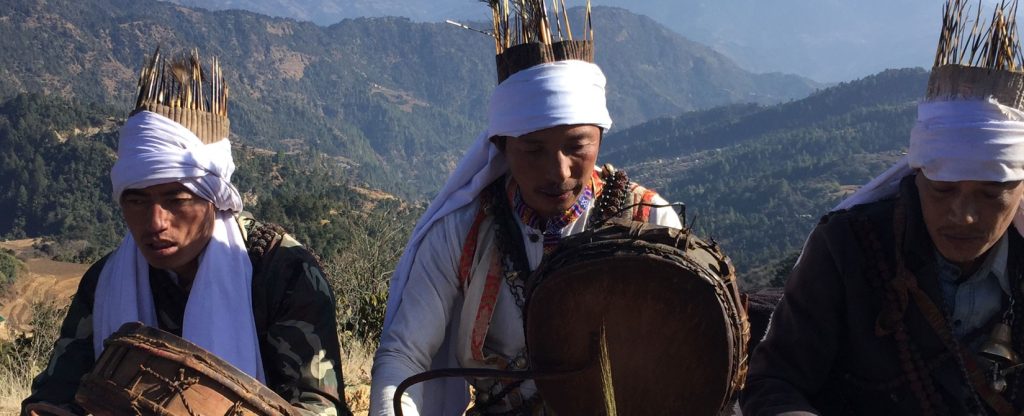
Shamanism in Nepal A recent anthropological study shows that this is not a single universal Shamanism but multiple forms of Shamanism. The diverse types of mediumistic and Shamanistic practices support this argument in Nepal. Even though the nation’s specific ethnic groups can be linked with particular ceremonial and religious traditions, it is beneficial to think of these historic strands as part of the broader Hindu-Buddhist Shamanistic ritual structure. In addition, it is familiar with the hill communities that reflect Nepal’s compound cultural, geographical, and linguistic distinctness. Large sections such as “spirit mediumship,” spirit possession, and “shamanism” do not do justice to reflect the whole array of ways in which rituals are practised. In early 2019, I spent a few weeks with a Shaman in East Nepal around 2700 meters to learn more about Shamanism. The village and its never-ending terraces were occupied predominantly by Tamangs. The other Nepalese ethnic groups consisted of Sherpas, Sunuwar Rais, Chettris, and Brahmins in the lower hills. The Chettri Shamans share several essential traits common with shamans of other ethnic groups, including the utilization of ritualistic paraphernalia and drums. However, the regions “Kul-Dhamis (lineage mediums) serve primarily as vehicles of the Chettri “Kul” patrilineage, and those are different from the ritual practitioners of the other ethnic groups. Dhami and Jhakri are often used as a single term in Nepal. However, Dhami Jhakri is commonly used conversely to refer to the ceremonial practitioners who are believed to have the ability to manifest local spirits and deities. The emphasis on metaphysical personification’s embodiment differentiates these practitioners from other religious gurus who either do not desire or cannot connect with spirits. In more extensive anthropological terms, Dhami generally refers to ‘spirit mediums’ or ‘oracles.’ In contrast, Jhakri is usually translated in English as ‘shaman.’ A variant of a ‘Shaman is Bombo, in the Tamang dialect. In local practice, a Dhami is a person who accomplishes a specific ritual objective. The hyphenated Kul and Jhakri refer to how this purpose is fulfilled; possession by the Kul-Deuta (ancestral deities) in the former instance; while utilizing the Shaman’s equipment helps gain access latter. The insistence on the technique and specific ritual accessories suggests a relevant difference between the Jhakri and Dhami masters. The significance of the Shamanistic accoutrement as a differentiating indication becomes even more credible. The term Jhakri not only refers to the human practitioner but also characterizes the Shaman’s protective deity. The ban(forest)-jhakri is a small creature covered in hair and lives in the surrounding forest. It is believed that it is equipped with a drum and shamanistic equipment. The Landscape of the Spirits In the hills of Nepal, it is believed that people and spirits walk the same passage. The deities and ghosts reside in the surrounding forests and hills. Faith healing is essential to define society, body, and spirit interconnection. Health does not only involve well-being at an individual and physical level. It means one’s hereditary, social, and cosmic affiliation advances as a whole in harmony. Occurrences of ill health amongst the Nepalese hill colonies are epitomized onto the encompassing landscape regularly. People fall ill when they pass through the domain of the spirit beings unknowingly. Then, the angry spirit attacks the trespasser by causing illness and invades his daily life. The shamans and mediums can access knowledge and heal the patients due to their association with specific deities or local spirits. It is believed that these practitioners can embody these spirits or gods in a special ritual. The lineage mediums are exclusively male, while shamans can be either male or female. Some ethnic communities believe those female shamans can be even more powerful than their male counterparts. The lineage medium only performs on certain ceremonial occasions and does not need unique accessories embodied by the lineage deities. The primary prerequisite is that he fasts while preparing himself ritually to serve as a vehicle for his gods to represent him. The possession of the Kul-Dhami always takes place inside the house close to a designated space to house the lineage deities. Two or more other mediums accompany the Kul-Dhami. Once possessed, he will proceed to utter clairvoyant proclamations to the assembled members of the family. The members of the family may and often do ask questions to the possessing deities. Generally, the main questions asked on occasions such as this address family matters, the concerns relating to the possible outcome of some disputes, the livestock’s wellbeing, matters concerning the crops, and other daily issues. The lineage mediums can also perform to correct specific causes of misfortunes of individuals or collective healing rituals. A compound set of affiliations integrates the household’s symbolic and dimensional properties. The management of the family’s domestic spaces, rituals, and the accurate definition of the cumulative existence as members of a single patrilineage are crucial in the lineage mediums’ practice. By comparison, the shamans’ rituals are not caste or lineage-specific. The Chettri shamans and those from other ethnic groups and communities can perform a curing ritual for their caste, ethnic group, or lineage as they are for someone from another society. The rituals of the Dhami-Jhakri unite the various societies into an extensive network of characteristics and experiences. The sound of the Shaman’s beating drum echos across the valley through the night while reinforcing these connective communities. One of the defining aspects of the Shaman all over Nepal is the standard shamanistic devices used to obtain admittance to protective spirits and battle or restrain ghosts, spirits, and witches. The equipment consists fundamentally of a ‘dhyangro’ (drum), a unique attire, head-dress, belts of bells tied around the waist or worn across the shoulders; some shamans have included the latest equipment in bicycle chains. The Shaman usually performs alone, and the centre of their restorative rites are typical of a personal and familial instead of collective nature. While in marked difference to the Kul-Dhami, the spot where the Dhami-Jhakri carries out his rites is undefined and is circumscribed primarily based on the situation. Integrating Spirits
Seven Steps to Success

Seven Steps to Success Wellness / By May McCarthy It is always interesting to see the differences between successful people who appear to be abundant, fortunate, and prosperous and seem tired, exhausted and struggling to make ends meet. Successful people know that it is crucial to set specific goals, consistently review them, focus on their skills, and act on opportunities to achieve them. They do not journey through life, reacting to every situation; they steer their course through life and expect good outcomes despite what is happening around them. We all want to be consistent in focusing on our goals, but that can be tough when life presents us with unexpected situations. For example, your boss might ask more of you at work; your children or spouse might need you to be home more often and available to attend important events; you might even feel like you do not have enough time for yourself to relax, have fun, and plan for the future. Before long, consistency can seem like an unobtainable dream. Often during a crisis, competitive pressures, and family obligations, we can feel overwhelmed and forget to focus on our goals’ desired outcomes rather than our situations’ circumstances. We can listen to the news, read industry reports, and hear colleagues who describe probable and dismal outcomes that they say are inevitable. The only way to keep yourself focused on the goals and results you want to experience is to follow a consistent daily routine that is deliberate in priming your brain for success in achieving your desired outcomes. Since 1982, I have had the privilege of growing six profitable companies in a variety of industries. In that time, I have learned that the most effective way to keep your goals in the forefront of your thoughts is to wake up 30 minutes earlier each morning to meet with your inner self. Treat your morning meeting with your inner self seriously. Hold your meeting in a space that is free of disruptions, and create a plan that you will follow. Ensure that you also have the necessary tools: an uplifting book that describes others’ successes in achieving their goals, a pen, and a notebook for you to write in. Read something that inspires you. Spend five minutes reading something uplifting to put you in a receptive mood. Then, as you read about others’ successes, your mind will look for ways to make those kinds of achievements familiar and routine for you. Suggested books to read are listed on the back of my book, The Path to Wealth. Write down what you are grateful for Spend up to 10 minutes writing a gratitude letter. Be thankful for the good things already in your life, as well as the things that you hope to have soon. Psychologists agree that gratitude and happiness help you be more focused and solve problems. Express gratitude for what you have, like health, family, and significant employment. Also, express gratitude for what you want as though you already have received it, harmonious relationships with family, friends, customers, and co-workers, and increased sales at work. The subconscious will then be directed to search for ways to help make these goals a reality. Read what you are grateful for out loud. Spend up to five minutes reading your letter out loud with emotion. Studies have shown that when we read something out loud, we anchor it into our subconscious, which will help us notice more possibilities to make our statements accurate. For example, remember the last time that you were planning to buy a new car? Didn’t you start to see that car on the road everywhere just before you purchased it? So your subconscious was helping you to notice possibilities to make that car yours. Visualize reaching your goals Spend up to five minutes with your eyes closed imagining what it will be like to have your goals realized. What will you be experiencing, and how will you feel? Who will be celebrating with you? As you see yourself in your achieved goal, you will anchor the belief that it can be yours. Olympic athletes use this technique as part of their training. They see themselves making the shot, winning the competition, and celebrating with teammates and family. If you want to win and achieve your goals, see yourself doing so first. One of the world’s greatest golfers, Jack Nicklaus, never took a shot, not even in practice, without having a clear, in-focus picture of it in his mind first. Author and motivational speaker Earl Nightingale put it perfectly when he said: “Whatever we plant in our subconscious mind and nourish with repetition and emotion will one day become a reality.” He knew that repetition would reap the rewards. At this point, you have spent 25 to 30 minutes with your inner self establishing your goals and giving your subconscious directions on what to focus on attaining. Now, go ahead and get your day started. After that, your subconscious will begin to do its job. Follow your intuition throughout the day. During each day, be on the lookout for leads, intuition, directions, and opportunities that will point you toward goal attainment. Some of these leads might not make sense, but as Steve Jobs said, “have the courage to follow your heart and intuition.” Take a step to do something, call someone who comes to mind out of the blue, or follow up on a gut instinct to go to a particular location. I once followed a gut instinct to drive 15 minutes out of my way in Cleveland and ran into a potential customer who later gave me a new contract worth over $400,000. In another example, I had a strong thought about my sister. I was led through a series of intuitive directions to have a spot on my leg removed, later diagnosed as malignant melanoma Clark’s level 3. Many famous and
Our founder’s interview on tourism on Nepal’s premium weekly newspaper Nepali Times.
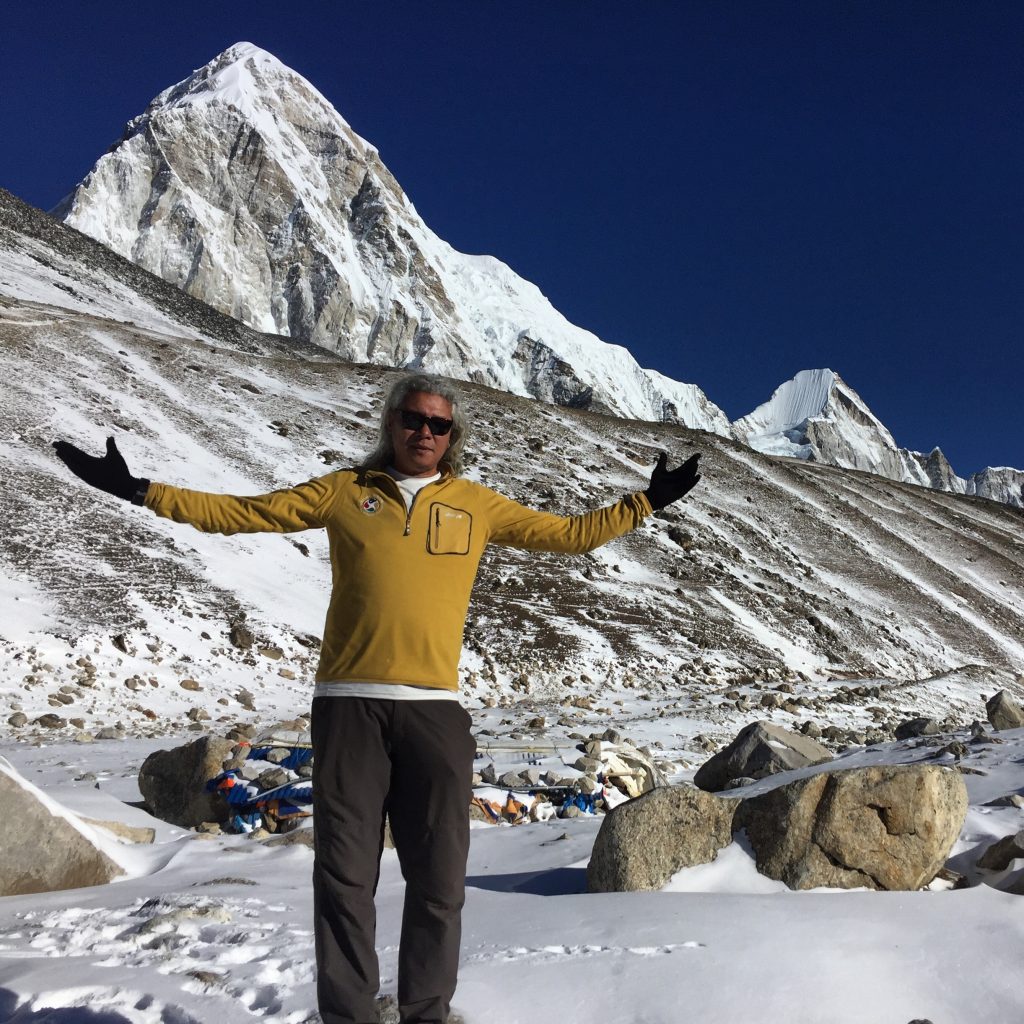
Selling Ourselves Short Our founder’s interview on tourism on Nepal’s premium weekly newspaper Nepali Times. Selling ourselves short For years, Nepal’s tourism industry has lamented that the country has gone for quantity rather than quality. They point to Bhutan, which has prided itself as a premium destination, as Nepal’s model should have followed. Read more:
Schools In Remote Villages of Nepal
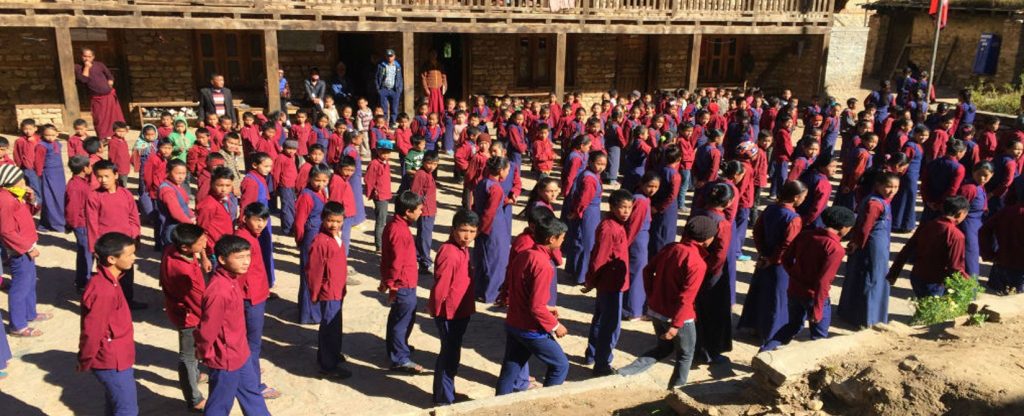
Schools in remote villages of Nepal. More and more schools are being opened all over Nepal, as people know the importance of education. The government builds most schools. However, some children from neighbouring villages walk for a few hours to and from a school in a “nearby” village. Many villages have taken the initiative to start schools on their resources or ask trekkers to help establish a school in their village if they are on the trekking routes. If a village is fortunate enough to be on a trekking route, they ask for donations from passing trekkers to finance their needs, such as paying the teachers’ salaries. The government takes over schools like this after a few years; however, due to the limited number of teachers provided, the village committees give the salary of the extra teachers they have hired. The Tapriza School. On a recent visit to a very remote district of Dolpo, we came across some interestingly different trends in schools of that district. We visited The Tapriza School. The first thing that caught my eye was the children’s uniforms – they were dressed in traditional Tibetan dresses. Most Government school uniforms in Nepal consist of dark blue trousers and light blue shirts for boys, while the girls wear dark blue skirts and light blue shirts. There were a few interesting differences practised in this school compared to the rest of the nation. First, it was the only high school in the district. The other schools in this district had only primary-level education. Second, all the students had various Non-Governmental Organizations (NGOs) find sponsors to continue their further studies in Kathmandu if they weren’t sent to The Tapriza School. Third, this school has a proud record of one hundred per cent of its students finishing the school leaving certificate (SLC) with a First Division (60 per cent or higher) mark since it was inaugurated in 1998. History of The Tapriza School In the late nineties, two Swiss students came to do research. The villagers approached them to ask for help in establishing a school. It caught the Swiss students’ attention; they went back home to spread the word. As a result, Tapriza NGO was founded in 1997 to help raise funds for the school. They even brought a few villagers to Switzerland to speak to potential donors for the school. The visit proved to be a success, and they made a trip to the United States to raise funds for the school’s construction. The mural explains how the school started. The uniqueness of the school. When we reached the school, the assembly was taking place. We noticed some building construction as some of the school buildings collapsed during the April 2015 earthquake. The students were smartly uniformed in traditional dress, as mentioned earlier. The school manager was kind enough to speak to us. They even had a Bon (an ancient religion that predates Tibetan Buddhism) Monastery within the school’s compound. We were informed that Bon monks and Nepali English languages teach Tibetan and religion. We visited the monastery, and I asked about the unfamiliar murals painted on the walls. On the right side of the wall next to the entrance, the paintings told the tale of the two Swiss students visiting the area and the villagers asking for donations in Switzerland and the United States. On the left side of the wall next to the door was a mural of how their ancestors dressed and lived and how the youths dressed these days. The manager informed us this was to remind the students of their rich roots. I found this great value to educate and tell the students about their heritage and how it was founded, like in most high Himalayan regions of Nepal. The schools open from March to the end of October and are closed for the winter from November through February. Check out our Trekking packages for Nepal, Bhutan, India, and Tibet.
Sano Babu Sunuwar Took Off From The Summit Of Mount Elbrus
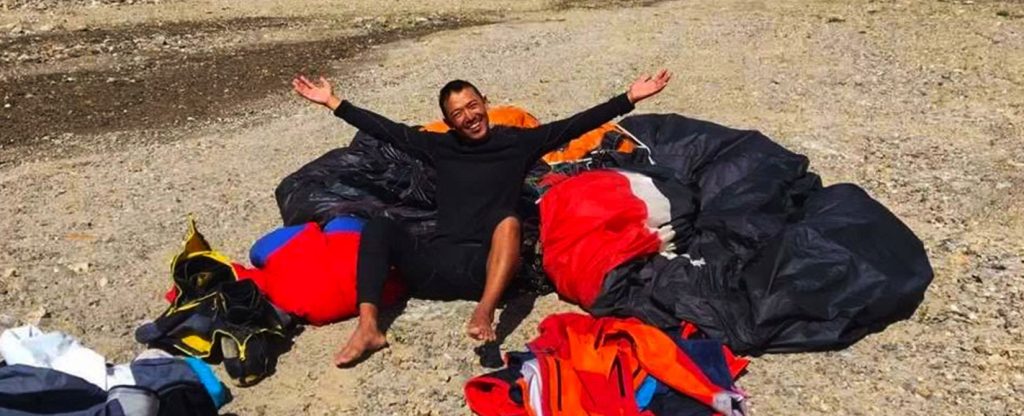
Sano Babu Sunuwar Took Off From The Summit Of Mount Elbrus Congratulations to Sano Babu Sunuwar, who took off from the summit of Mount Elbrus. Mount Elbrus is the 3rd of the Seven Summits. He is attempting to take off on a paraglide. He has already launched his Paraglide from Mount Everest and Mount Kilimanjaro summits. Previously, he set the world record by jumping off Mount Everest’s summit on a paraglide and kayaking down the Dudh Kosi river to the Bay of Bengal. He and his fellow adventurer Lakpa Tsheri Sherpa were named in 2012 by National Geographic (NatGeo). Hats off to this unique adventurer! He has started a new trend in Russian tourism – commercial tandem paragliding from Mount Elbrus. Experience our unique adventure sports combination of trekking to Mardi Himal’s base and paragliding to Pokhara with the company owned by Babu Sunuwar. Check out our Trekking packages for Nepal, Bhutan, India, and Tibet.
Ram Navami Festival of Nepal.
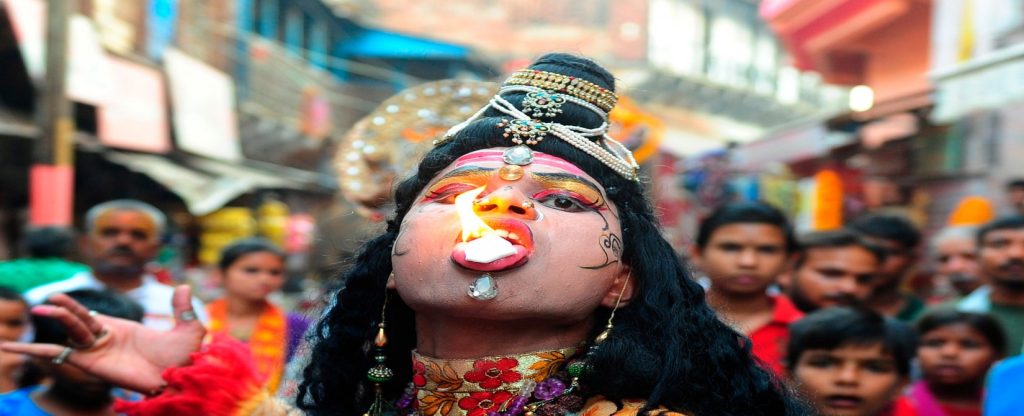
Ram Navami Festival of Nepal 21st April 2021 2nd April 2020 14th April 2019 14th April 2018 Lord Ram is considered to be another incarnation of the Hindu god Vishnu. The Nepalese have an ingrained opinion and devout confidence in him. His control, clean heart, kindness, love, bravery, peacefulness, and expressiveness in speech gave him the desired status amongst his devotees. Ram Navami is one of the well-known festivals of the Hindus. It falls on the Navami of Shukla Paksha of Chaitra Month, consistent with the Hindu calendar. These days it is celebrated as the birthday of Lord Ram, the son of King Dasharatha. Ram is the seventh incarnation of the Hindu god – Vishnu. Ram Navami marks the quiet of the nine-day utsava, referred to as Chaitra Navratri. On the day of Ram Navami, the houses are cleaned, and Lord Ram’s pictures are placed on a platform in preparation for the puja. In addition, Bhajan (devotional songs) praising the exploits of Lord Ram are sung at various houses and temples. This day is celebrated as the Ram Navami festival all over Nepal and India. His life story is told in the much-adored Hindu epic- the “Ramayana.” It is believed that the planet became under the control of an evil and monstrous mischievous sprite, king Ravan, before Lord Ram’s birth. Ravan had pleased Lord Brahma, who bestowed Ravan a boon that no God or demon could kill him. This gave Ravan protection from everyone apart from a mortal. To get rid of the evil ruler, Lord Vishnu took Lord Ram to the town of Ayodhya. Why is Ram Navami celebrated? King Dasharatha, who ruled over Ayodhya, had one stress – none of his three queens could give him any sons. So Lord Vishnu gave them nectar to drink, and momentarily the eldest son Ram was born to the first queen, the second queen gave birth to Bharat, and the third queen had the twins, Lakshmana and Shatrughana. All 4 of them became ideal youths, but Ram grew up with charm and chivalrous charisma. King Janak, who ruled the Mithila Kingdom in southern Nepal, had a lovely daughter known as Sita. When she turned 16, Janak detained a top-notch match wherein it became introduced that the one who could cord the perfect curtsy of Lord Shiva would be successful in coming first and winning the hands of fair Sita. Princes and Kings from far and wide tried to do it; however, all failed. Finally, Lord Ram did not just bend the arrow but also snap it into two. Therefore, Lord Ram won Sita’s hand, seen as the epitome of womanhood- stunning, pious, loyal, mild, and modest. During his 14-year exile from Ram, the demonic Ravan abducted Sita. However, she determinedly resisted his advances. Finally, the loyal servant monkey Hanuman, son of the Wind-god, located Sita’s location. Ravan had taken her to his beautiful kingdom Lanka, a mythical country now believed to have been Sri Lanka. Finally, with the assistance of Hanuman and the monkey horde, Ram and Lakshman slew the evil Ravan and eradicate the entire dynasty of demons from the earth. It is for that reason Ram Navami is celebrated as Lord Ram’s Birthday. It is marked by many pleasant ceremonies at Janaki Mandir in Janakpur. Large processions of elephants and bullock carts and ever so often, as many as 100,000 pilgrims visit this city, dancing and singing songs that praise Lord Ram. In Kathmandu, hundreds of humans, including the royal circle of relatives, visit the temples to respect Ram, as symposiums are detained to praise the proper existence he used to live. In Bhaktapur, the neighbouring city of Kathmandu, the humans go to the banks of the waterway Hanumante; a temple containing Ram’s statue with his devoted servant Hanuman is located. As a consequence, Ram Navami is widely known at some point in the kingdom with incredible fanfare. Check out our Trekking packages for Nepal, Bhutan, India, and Tibet.
Ra Collaborates On Environmental Protection Education For School Kids In Kathmandu
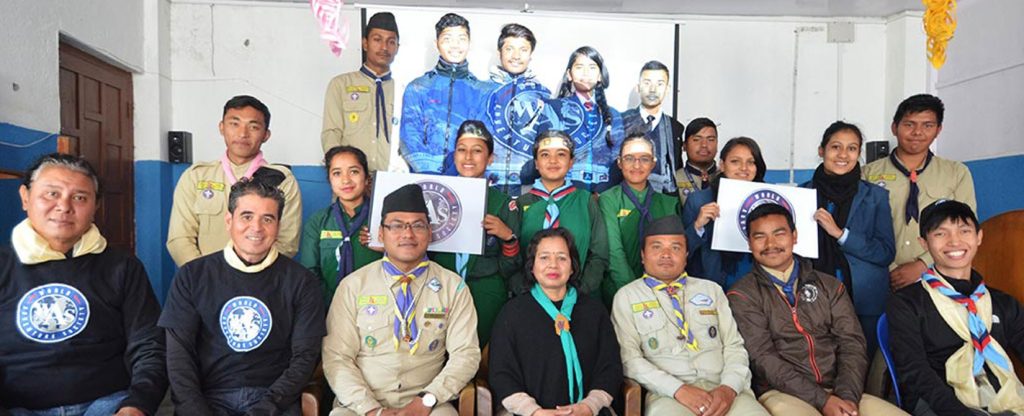
Ra Collaborates On Environmental Protection Education For School Kids In Kathmandu Founder Raj Tamang and other World Adventure Society ambassadors, Sunil C. Sharma from Nepal and Jia Jian Koh from Singapore, delivered an environmental protection lesson based on “Leave No Trace” principles for secondary and high school students in the Lalitpur district of Nepal. This may be the first of many such collaborations among the Asian WAS. Asian Was ambassadors plan to combine the ambassadors to grow the World Adventure society’s reach. On 18th December, Vajra Academy was the venue for the day one session. The school is environmentally savvy as it has adopted many sound environmental practices. The school runs its entire kitchen on renewal energy, such as solar and biogas. It is situated on the outskirts of the Lalitpur district in the Kathmandu valley. Visit the school at this location. The ambassadors observed that the students were highly disciplined and knowledgeable. They took a good part in the question and answer session and were very engaging. They were given practical knowledge on avoiding or minimizing the impacts of our outdoor pursuits on Mother Nature. They also learned ways to be safe and considerate to other outdoor users. On 19th December, the ambassadors reached out to Sudesha High School, located at Bhainsepati. The Ambassadors conducted two sessions, one for a small sub-segment of Lalitpur district Nepal Scout and the other for a grade of 7 and eight students. Both the Sessions were organized by Rover leader Mr Satya Narayan Shahi of Nepal Scout Lalitpur district. The Nepal Scout organized this session very professionally. The School Principal, Mr Madhusudan Lohani, chaired the meeting. Ambassadors received a very cordial welcome from the Scout cadets. National Anthems of Nepal and Singapore were played to start the session formally. The Ambassadors were captivated by the level of enthusiasm from the students to learn and discover more. They kept fielding one good question after another one, which benefited everyone. The mature students even asked if they could become a member of the World Adventure Society. This was very encouraging to hear that they wanted to be WAS members at such a tender age. This is a good sign that WAS is a beaming positive image to the world. We want to thank Ms Achala Thapa of Nepal scout, who helped coordinate the two-day training sessions at various schools. It is part of our Responsible Tourism practice. Check out our Trekking packages for Nepal, Bhutan, India, and Tibet.
Qualities of an excellent trekking guide or trek leader
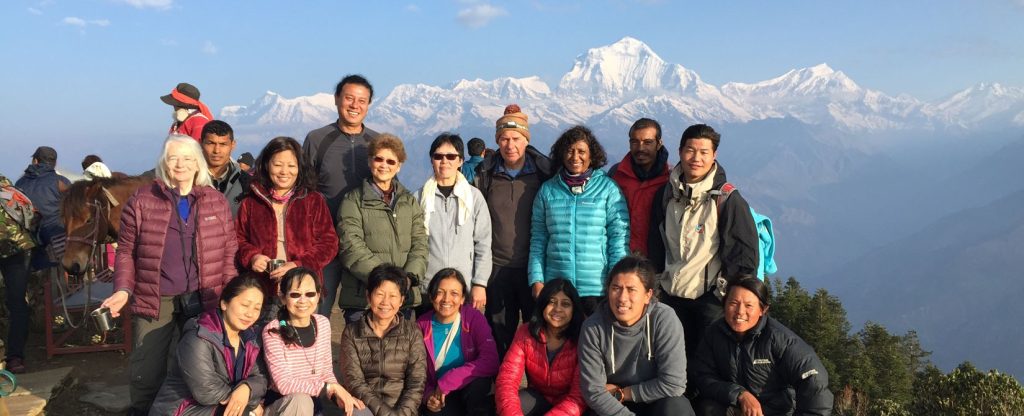
Qualities of an excellent trekking guide or trek leader. To be an excellent trek leader, one not only needs to have charisma, knowledge, communication skills, storytelling abilities, and organizational skills; sometimes, you also need to be a father figure, psychologist, counsellor, even mediator, and a mentor to not only to the clients but the support crew as well on infrequent occasions, even a lead manager of crisis and a Wilderness First Responder. Several “top-notch” City Tour guides were interviewed for their thoughts on Trek leaders’ jobs in a recent recruitment effort. Most were doubtful about their fitness and ability to handle the mountains” hardships and discomforts. They preferred the ‘more cushy” job of guiding in the urban areas with comfortable hotels and good food – basically the “Good easy” life as a guide. This interview has confirmed our previous belief that great trek leaders are true gems worth their weight in gold. 1. Charismatic personality: No matter the size of the group, there’s often just one main group leader for each trek and several assistant guides. Unlike in city tours, a trek leader is in charge of making the trekkers happy and looking after his team member’s welfare in the support crew. The clients will not be expecting information but also entertainment. A trekking group leader must have an abundance of charisma, charm, and a great sense of humour is a bonus. 2. Knowledge is paramount: Charismatic leaders are great, but they cannot have charm alone. A great trek leader needs to know what they are talking about: from facts and figures to the weather forecast for the coming days. Give summaries on the subjects you are talking about and ask the clients if anyone wants to learn more details. Don’t bore them with long talks of history/culture/nature, etcetera. A great trek leader could be very knowledgeable, but they are not a walking encyclopedia. If asked about something you do not know about – DO NOT MAKE THINGS UP and LIE! Someone in the group will pick up the lie. Once they discover that you have lied: you will lose all credibility, and it does not matter that you did your job exceptionally well for 20 days on a 21-day trek; they will think you must have lied to them throughout the trip. Tell them that you do not have the answer to that particular topic but will update them once you learn more about it. You will receive many “curveballs,” especially early in your career; contemplate how you responded to them and try to handle those situations better the next time. Nowadays, it is easy on more commercial trials to get wifi connections. You can always search for answers online. 3. Excellent communication skills: You might have incredible knowledge and outstanding charisma. Still, if you do not have “people skills” to interact with the group, they will probably feel like listening to a pre-recorded tour. Trekking vacation is very different from regular bus tours. Your clients will spend extended periods out of their comfort zone, making them comfortable, chatting, and joking with them. Ask them how things are different from where they come from to where they are. Ask them to speak about themselves, what they do, what they like, etcetera. Most people want to share their passions and favourite things with new friends. Make sure you are paying equal attention to all group members and engaging everyone in participating. 4. Excellent storytelling ability: Trekkers love to hear about cultures, religious practices, and the history of the region they are trekking in; they like listening to stories. Therefore, a great trek leader needs to be an excellent storyteller. Storytelling is not straightforward; it is down to timing, how long the story is, and much more. Plan precisely when and where you will tell a particular story, decide how long it should be, and practice it until you know it, like the back of your hand. Reminder: Storytelling is not making things up – it is the same as lying! 5. Excellent organization skills: Timing is of the essence when you are leading a trek. You need to be at specific places at specific times; you need to get to where the lunch place has been chosen and to your campsite at the end of the day. The group can only spend a certain amount of time in places for photos, admiration, etcetera. So you have to shepherd the group by giving them enough time to observe & absorb the surroundings at the same time, gently reminding them where they need to reach at the end of the day and hopefully before it gets dark. Look at the given timings for each day for the hike; if some people take longer, add more time to reach the destination. If most of the group is slower than regular trekkers, start earlier in the morning. If the need arises, make those rest days into hiking days to compensate for their slowness (provided their acclimatization to altitude is not compromised). 6. Good sense of humour: It is an asset if you can lighten things up with occasional jokes here and there. For example, making fun of yourself to make the group smile is a safe way to avoid upsetting group members by making jokes about them. In addition, you can add humour to the stories you tell by pointing out a funny situation or lighthearted facts. 7. You must be sensitive: Not all group members have the same fitness level, and someone might have low self-esteem from being the last person to arrive at the campsite every evening or suffering from diarrhoea or other ailments. An excellent trek leader needs to be sensitive, supportive and encouraging during situations like this. Understanding human psychology and being compassionate can make problem-solving a lot easier. 8. You need to think on your feet: As a trekking guide, you need to be spontaneous. Your day can be unpredictable; the weather can quickly change, bridges might be
Charity Trek to Poonhill for autistic children of Bahrain.
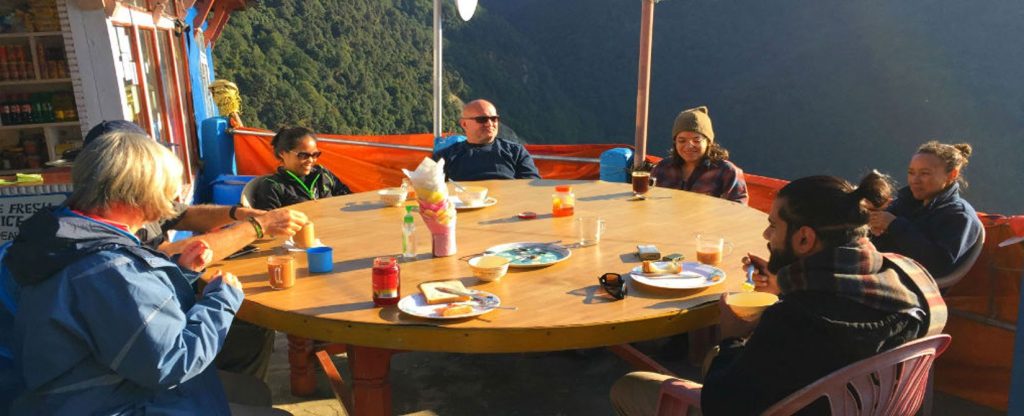
Charity Trek to Poonhill for autistic children of Bahrain. 27th – 3rd November. A friend from Bahrain contacted me to organize a Charity trek to raise Alia National School funds in Bahrain. Alia National School is for children who have autism and Down syndrome. This was the second time a charity trek was organized to raise funds for this school. The first time was arranged in February 2011. A group of 8 trekkers came from Bahrain. The group consisted of 4 Bahrainis – a family of 3 and a single Bahraini gentleman, an English couple, A Swedish gentleman, and his Filipina wife. The whole trip was just a week long. Most of them arrived a day earlier than the planned day. Kathmandu to Pokhara drive. We left early at 7 am to avoid the heavy traffic coming out of Kathmandu valley in our private van. Our driver took us through the back roads avoiding the main highway. We were out of Kathmandu valley in an hour; I have heard stories of how it has taken as much as 5 hours to get to their homes once they reach the valley. The drive was relatively uneventful, with a few toilets, a coffee break, and a lunch stop at Gunadi, about 40km outside Kathmandu. Despite being a mere 200 km distance, the winding road takes about 7 hours to reach Pokhara from Kathmandu. A couple of group members ran to our hotel’s bar when we arrived. We checked in and agreed to meet in an hour to walk, do some hiring of trekking gear, and window-shopping. Most of us stuck together for a dinner of Galette and barbecue at the French Creperie, Khahare, Lakeside, Pokhara. The Trek. We left Pokhara after breakfast on a 90-minute drive to Nayapul, where we alighted from our van and got into three jeeps for a further 45 minutes of the off-road ride to our starting point of the trek. Our support staff of porters, assistants, and our trekking chef waited for us at Nayapul, where we changed vehicles. Our support crews were introduced to our trekkers before we started our trek. The first 25 minutes of our tour were undulating with short ascends and descends until the village of Tirkhedhunga. I came to learn that one of our trekkers was afraid of heights. However, she crossed two steel suspension bridges within the first 30 minutes and three more wooden bridges until the end of this trek. The following two hours were a steep uphill climb on Ulleri village steps, where we stopped for lunch. We had a relaxing lunch break that was 2 hours long. The lodges make their food freshly after it has been ordered. It can take between one hour to ninety minutes, depending on how many different dishes are ordered and the number of trekkers who have ordered their meal. We only had one more hour of trekking before we stopped for the night at Banthanti. The Hike to Ghorepani. We woke up to a bright morning after a windy night, which blew away the clouds making the Himalayan peaks visible. The hike takes place in a beautiful forest setting at a much gentler gradient. The trekkers stopped for numerous photos in the picturesque setting. The forest we walked through is radiant with beautiful Rhododendrons and Orchids during spring. We stopped for an early lunch at Nangethanti as the walk was only three and a half hours long. Our trekkers from Bahrain enjoyed the warmth of the sun, and a couple of them enjoyed a bottle of beer. The beautiful forested walk continued for another 90 minutes before we reached Ghorepani. Ghorepani is set on top of a hill with stunning views of the Dhaulagiri and Annapurna range on clear days. It was cloudy when we got there. However, some peaks became visible as the air temperature became more refreshing when the clouds descended. Poonhill for Sunrise. We got up at 5 am and left the hotel at 5.20 am for Poonhill for sunrise. We could see a line of headlamps both in front and behind us. Ghorepani has many lodges, and it is one of the most popular spots for trekkers. It is a junction for trekkers to come from 3 directions. We saw that it was a foggy morning as the early light hit us on the way to Poonhill. Several groups of trekkers were on their way down as it was both hazy and cloudy. We heard cheers from the excited trekkers when the views got clear as we got close to our destination. We arrived on time for the clouds to clear up in time for sunrise. Our team treated the trekkers to a cup of hot chocolate, which was much appreciated. We returned to Ghorepani after admiring the views and having taken photographs. We finished packing up our duffel bags before having breakfast. Trek to Tadapani. This was going to be the longest day for the trekkers from Bahrain as we had hiked an hour to get to Poonhill, 45 minutes down for breakfast, and we had four and a half hours more to go. We started the hike with an ascent up to Deurali pass and began descending to Banthanti, where lunch was pre-ordered by our staff. It was chilly, and the weather had turned cloudy at Banthanti. We were glad to be moving after lunch to get warm. We had 20 minutes of undulating terrain in a Rhododendron forest before descending to a small stream; the final leg of this day’s hike was a 45-minute climb to Tadapani, our destination for the night. Everyone in the group was tired and went off to bed by 7.10 pm after dinner. There was some family feud going on at the lodge where we stayed. Most of our group members heard when they first went to bed but soon fell asleep; that was how tired they were. Our staff had to go and ask the family to stop










